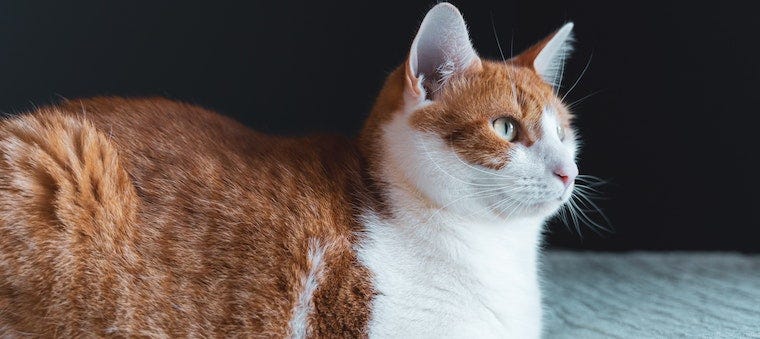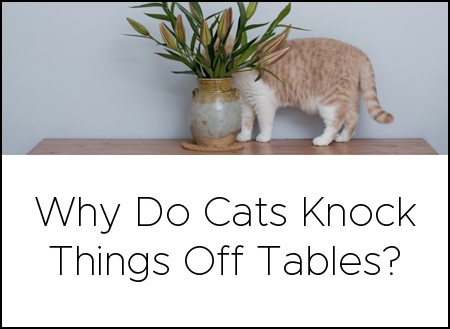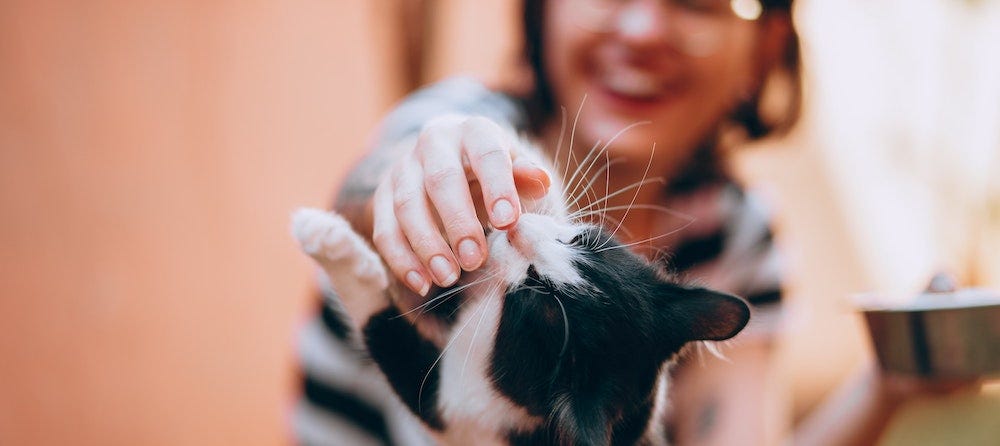Have you ever looked at your cat and wondered, “where’s the snowstorm?” If you’re dealing with a lot of cat dandruff, don’t simply “brush it off.” Certain cases of cat dandruff can be attributed to serious medical issues. Learn more about what causes cat dandruff and tips to control the flaky mess.
What is cat dandruff?
Cat dandruff is the dry, dead skin cells produced by the sebaceous glands in your cat’s skin. It’s more likely to occur on your cat’s back, closer to the tail than to the head.

Cat dandruff is sometimes more than white skin flakes showing up on your cat’s fur. Other signs accompanying dandruff may include:
- Greasy fur or skin
- Rashes or bumps on the skin
- Visible sores
- Irregular bald patches or general hair loss
Cat dander vs. dandruff
You’ve probably heard about cat dander, which is responsible for some people’s cat allergies. When it comes to cat dander vs. dandruff, the difference is literally microscopic: Dander is invisible skin cells that cats naturally shed. Dandruff, on the other hand, is when shed skin cells build up, clump together, and become visible as they fall off.
Causes of cat dandruff
There is a wide range of mild irritants to serious medical conditions that cause cat dandruff. If you’re noticing a lot of dandruff on your feline, it’s best to consult with your veterinarian to rule out potential issues.
Obesity
60-70% of cats in the U.S. are considered overweight to obese. Your cat’s dandruff could simply be attributed to his inability to groom himself well due to his weight. For instance, an obese cat may have a particular challenge grooming his lower back, near the base of the tail—a common place for dandruff to arise.
Diet and/or hydration
Your cat’s diet may be leading to a nutritional deficiency that causes cat dandruff and poor hair coat. A diet that lacks omega-3 and omega-6 essential fatty acids can lead to these skin conditions. Furthermore, your cat may not be getting enough hydration. If your cat is chronically dehydrated, his skin will reflect that dryness.
Environment and/or allergies
An indoor environment that is too warm can dry out your cat’s skin, leading to dandruff. This is more of an issue in drier seasons. There might also be something in your cat’s environment or diet that is giving him skin allergies: Dust, pollen, food, insect bites, and medications (to name a few) can cause itchiness and flaking.
Parasitic or fungal infections
External parasites such as fleas and ticks or mites may cause symptoms of cat dandruff. Fungal infections like ringworm can do the same. Even gastrointestinal pests like worms can cause a dull hair coat, which may lead to cat dandruff.
Serious medical conditions
Less commonly, cat dandruff is symptomatic of a more serious health concern, including cancer (such as cutaneous lymphoma), diabetes, or hyperthyroidism.
6 tips to control cat dandruff

Controlling cat dandruff begins with determining its cause. First, take your cat to the vet to rule out serious medical concerns or infections. From there, you can try these tips to get your cat’s dandruff under control.
Provide your cat with more hydration.
Add wet food to your cat’s diet if you haven’t already. You should also try a pet water fountain, as some cats prefer to drink from “running” water as opposed to standing water.
Change your cat’s diet and/or add dietary supplements.
If you suspect your cat may have food allergies, the process of changing his diet may be somewhat trial and error. Talk to your vet about a properly balanced feline diet, as well as adding dietary supplements such as omega-3 fatty acids in the form of fish oil supplements.
Brush your cat often.
Brush your cat at least weekly (or even daily, in the warmer months). Not only is this helpful for avoiding hairballs, it allows for special bonding time between you and your cat. And if your cat is unable to groom himself as well because he is overweight, you’ll be lending a helping hand.
Give your cat a bath.
Cats don’t need baths very often, but a good case of cat dandruff is all the more reason to try one. Learn how to give your cat a bath without bloodshed, or make the whole process much less traumatic with a catnip-infused cat bath foam wash—no water required!
Try a humidifier.
In the case of dry indoor environments, placing a humidifier in your home can help add moisture to your cat’s skin and fur.
Help your cat lose weight.
Finally, if your cat’s obesity has affected his ability to groom, it’s time to encourage him to lose weight. Learn more about exercising your cat and using an automatic cat feeder to enforce portion control in his diet. Above all, help your cat live a healthier life!
Cat dandruff may be a small irritant to you—but it could be a sign of something more serious going on with your cat. When in doubt, check with your veterinarian.
Cover photo by Francis Nie on Unsplash









